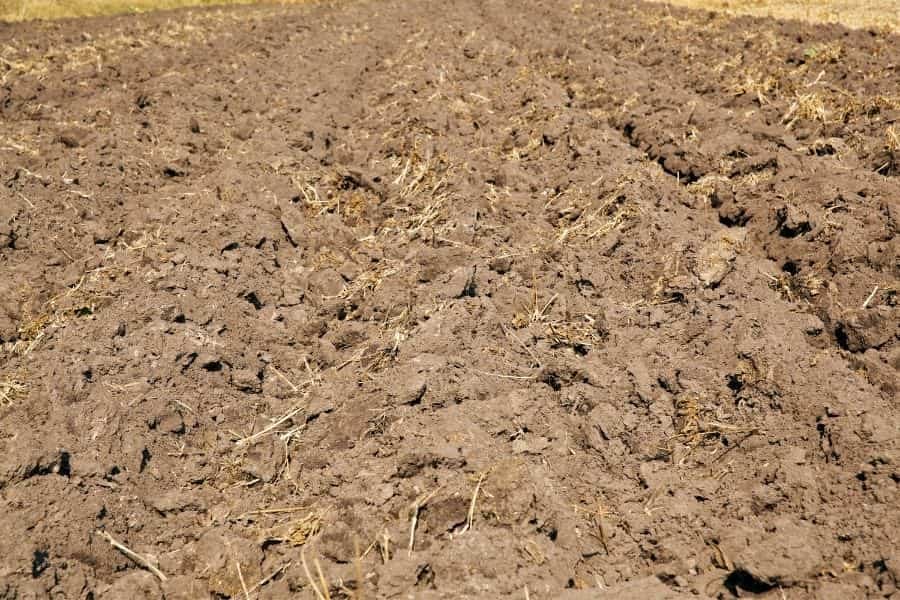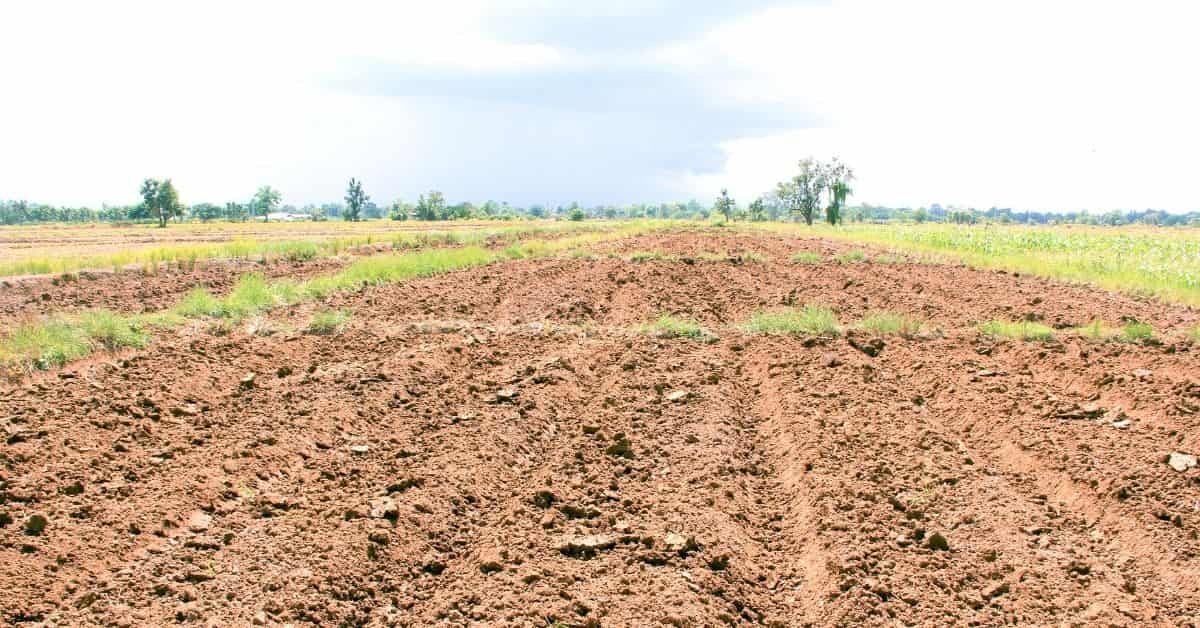Definition of tillage: Tillage is a farming practice that helps to prepare the soil for plant growth. Tillage can be done with a tractor, an implement called a harrow, or a tool called a disc plow. Tillage is used to turn over the soil surface, break up the soil clods, and remove weeds and debris. It also makes it easier for rain or irrigation to reach the root zone of plants.
Definition of tillage:
- Tillage is the physical manipulation of soil with tools and equipment to achieve good tilth for enhanced seed generation and subsequent crop growth.
- Tillage is the process of manipulating the surface soil with implements to create more favorable circumstances for agricultural plant growth.
- Tillage is the mechanical manipulation of surface soil to bring about desired changes in the physical, chemical, and biological qualities of the soil in order to enable optimal seed germination, plant seedling growth, and increasing plant growth and development.
- Tillage is the oldest and most fundamental activity of man in agricultural production, preparing virgin or fallow land for crop cultivation.

Fundamental objectives of tillage:
- To prepare a suitable seedbed
- To remove or destroy weeds
- To eliminate competition from weed growth
- To improve the physical condition of the soil
- To control insects, other pests, and disease organisms
Objectives of tillage:
The goals of tillage operations can be divided into three categories: physical, chemical, and biological benefits/improvements derived from the soil. These are the following:
Physical benefits/improvement of soil due to tillage:
- To cut loose, shelter the dense soil to the desired depth and break the clods and crust to a desirable extent for a suitable seedbed for planting.
- To cover and pack the seeds or planting propagates with soil.
- To improve the capacity of soil to receive rain or irrigation water, retain and release moisture for crop plants, or increase percolation or drying of excess soil water.
- To redistribute the soil constituents, particularly soil particles, organic matter, micro-organisms, moisture, and air.
- To maintain the proper structural condition of the soil.
- To incorporate crop residues, green manure, and other organic manure fertilizers.
- To prepare the land surface suitable for easy, early, and uniform irrigation and drainage water distribution.
- To increase soil aeration, particularly in non-capillary spaces.
- To reduce soil erosion, degradation, and depletion.
- To modify the thermal capacity of the soil.
Chemical benefits/improvements of soil due to tillage:
- To accelerate the weathering of soil
- To improve the availability of plant nutrients by enhancing the decomposition of organic matter, mineralization, etc.
- To remove toxic gases from the prolonged reduced soil conditions and detoxify soil from any harm of agrochemicals.
- To reclaim problem soils.
Biological benefits/improvements of soil due to tillage:
- To control soil-borne insect pests, pathogens, and larger soil animals, including rodents
- To improve the distribution of nutrients.
- To improve the growth of roots by reducing penetration resistance of the soil promoting roots respiration affects the moist zone of the soil.
- To provide an optimum habitat that encourages early and uniform growing and seedlings establishment.
- To provide better anchorage to crop plants and the underground development of storage roots and stems.
- To encourage soil-inhabiting growth and activity, beneficial flora and fauna, including symbiotic bacteria.
- To provide suitable conditions for necessary field operations, for instance, planting and harvesting quickly, smoothly, and uniformly.
Tilth:
Tilth is the product/result of tillage. The physical condition of the soil brought out by tillage that influences crop emergence, establishment growth, and development is termed tilth. It is a loose, friable airy, powdery and crumbly soil structure with optimum moisture content suitable for the germination of seeds.

Characteristics of an ideal/good tilth:
- There should be a continuous system of wide pores from the soil surface down to the water table or the land raised through which supplies water can go rapidly and always a rapid distribution of CO2 from the surface soil to the atmosphere.
- These pores should be sufficiently stable to last for several years before being fielded up.
- There should be volumes between these pores that hold as much water as possible against drainage but are readily accessible to the plant roots.
- The surface soil should be crumby, and the crumbs should be large enough not to blow away but small enough to allow good seed germination and sufficiently unstick when moist for them to keep their individuality when tractors or implements move over them.
Types of tillage:
- Preparatory tillage –
- Primary tillage
- Secondary tillage
- Inter tillage
Preparatory tillage:
The tillage operation is done for the purpose of the field for raising crops. It consists of deep plowing and loosening of soil to bring about desirable tilth and incorporate or uproot weeds and stables.
Primary tillage:
In preparatory tillage, the first cutting and inverting of the soil after the harvest of a crop or untilled fallow or bringing virgin or new land under cultivation is primary tillage. The depth of primary tillage ranges from 10 – 30 cm. It may be done once, twice, or thrice in a year. Primary tillage includes plowing in which the soil is cut, lifted, shattered, twisted, and inverted for further preparation. Large soil clods are formed due to primary tillage.
Secondary tillage:
The tillage operations are done after primary tillage to bring a good soil tilth. In this operation, the soil is not inverted. Still, the instinct of that stirred by breaking clods and crusts, uprooting and removing weeds and root stokes incorporating manures and fertilizers leveling, preparing rides, farrows, and irrigation drainage channels of field, conserving soil moisture, increasing infiltration and aeration, and checking erosion, post plowing but presiding tillage operation with their stimulating effect of the soil destroy weed seedlings and prevent weed seed germination.
Inter tillage:
The tillage operations are done in the field after sowing or planting and before harvesting crop plants. i.e., during field duration. This is also known as inter cultivation or post-seeding of the planting cultivation. It includes harrowing, hoeing, weeding, earthing up, raking, riding, and furrowing. Inter tillage is shallower in nature.
The crop to emergence keeps the field free from weeds for a significant period by killing germinated but pre-emerged or emerging weeds. Intertillage helps incorporate crop-dressed fertilizer to the earth up in a direct-seeded wetland and transplanted paddy field. It includes paddling and bushing of rice land by inducing tillering.
Methods/system of tillage:
- Conventional tillage system
- Zero tillage
- Minimum tillage
- Strip tillage
- Conservation tillage system
Conventional tillage system:
This is a method commonly found worldwide, including in Bangladesh. Where cattle and horses are used as the main power source. Later on, tractor power is also used in intensive manure. Plowing, disking once or twice to break the soil clods, and collecting the plant materials have been common for many years. The conventional tillage usually prepares a farm seedbed free of clods, and soil aggregates are farmly divided.
Zero tillage:
Zero tillage may be defined as the tillage system that involves no seedbed preparation other than opening the soil to place the seed.
Minimum tillage:
The last amount of tillage required to prepare a good seedbed for seed germination, plant establishment, and prevent weed growth is known as minimum tillage.
Strip tillage:
The tillage operation performs in the isolated bands separated by the soil bands. That is not distributed by tillage implements is known as strip tillage.
Conservation tillage system:
A conservation tillage system may be defined as a system of tillage operation that involves minimum preparation of the field for raising crops. This is also called abnormal tillage.
